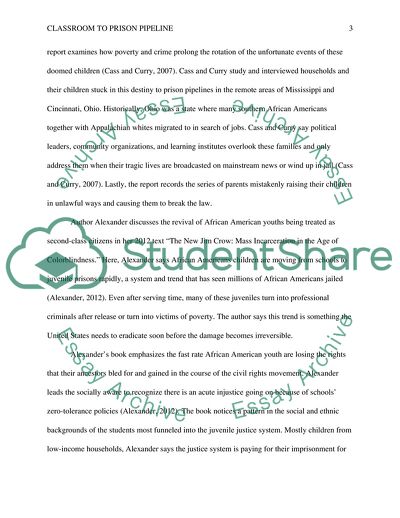Cite this document
(Investigating the Classroom to Prison Pipeline and Ways to Eradicate Research Paper Example | Topics and Well Written Essays - 1500 words, n.d.)
Investigating the Classroom to Prison Pipeline and Ways to Eradicate Research Paper Example | Topics and Well Written Essays - 1500 words. https://studentshare.org/psychology/1848888-investigating-the-classroom-to-prison-pipeline-and-ways-to-eradicate-the-problem
Investigating the Classroom to Prison Pipeline and Ways to Eradicate Research Paper Example | Topics and Well Written Essays - 1500 words. https://studentshare.org/psychology/1848888-investigating-the-classroom-to-prison-pipeline-and-ways-to-eradicate-the-problem
(Investigating the Classroom to Prison Pipeline and Ways to Eradicate Research Paper Example | Topics and Well Written Essays - 1500 Words)
Investigating the Classroom to Prison Pipeline and Ways to Eradicate Research Paper Example | Topics and Well Written Essays - 1500 Words. https://studentshare.org/psychology/1848888-investigating-the-classroom-to-prison-pipeline-and-ways-to-eradicate-the-problem.
Investigating the Classroom to Prison Pipeline and Ways to Eradicate Research Paper Example | Topics and Well Written Essays - 1500 Words. https://studentshare.org/psychology/1848888-investigating-the-classroom-to-prison-pipeline-and-ways-to-eradicate-the-problem.
“Investigating the Classroom to Prison Pipeline and Ways to Eradicate Research Paper Example | Topics and Well Written Essays - 1500 Words”. https://studentshare.org/psychology/1848888-investigating-the-classroom-to-prison-pipeline-and-ways-to-eradicate-the-problem.


